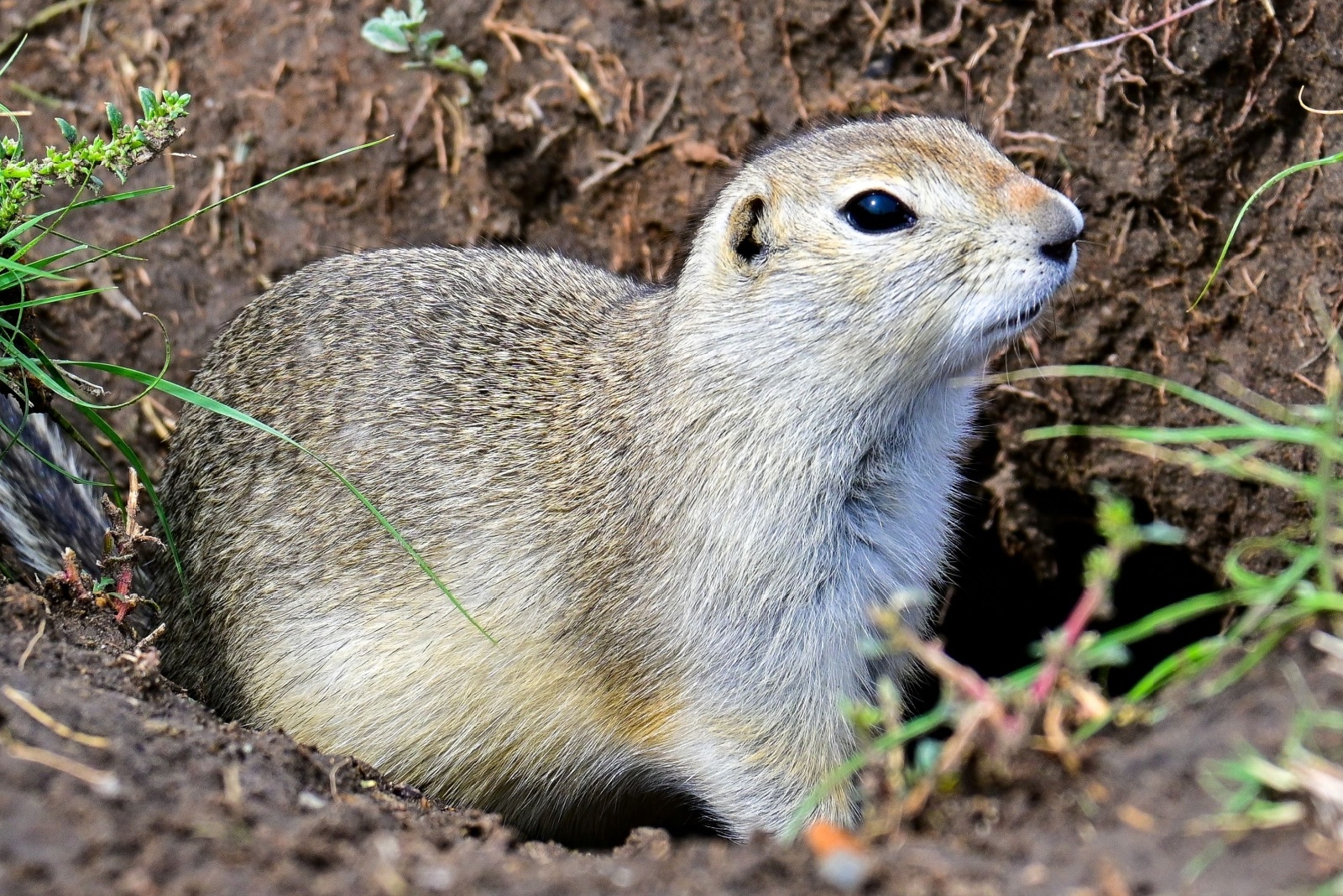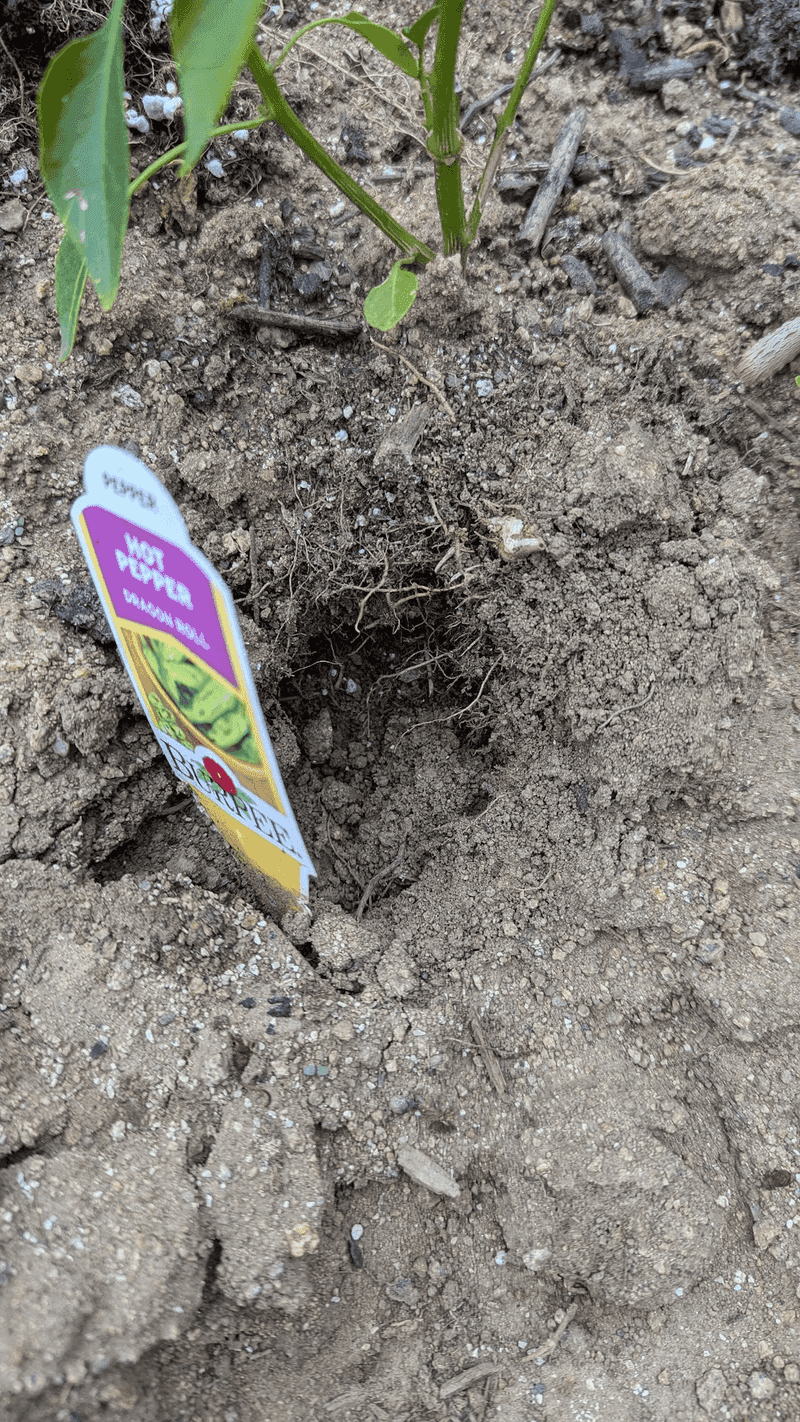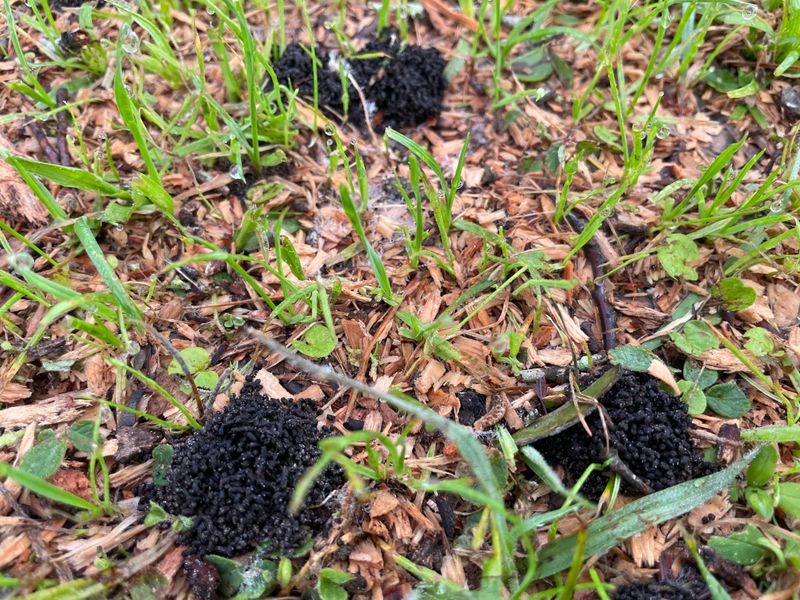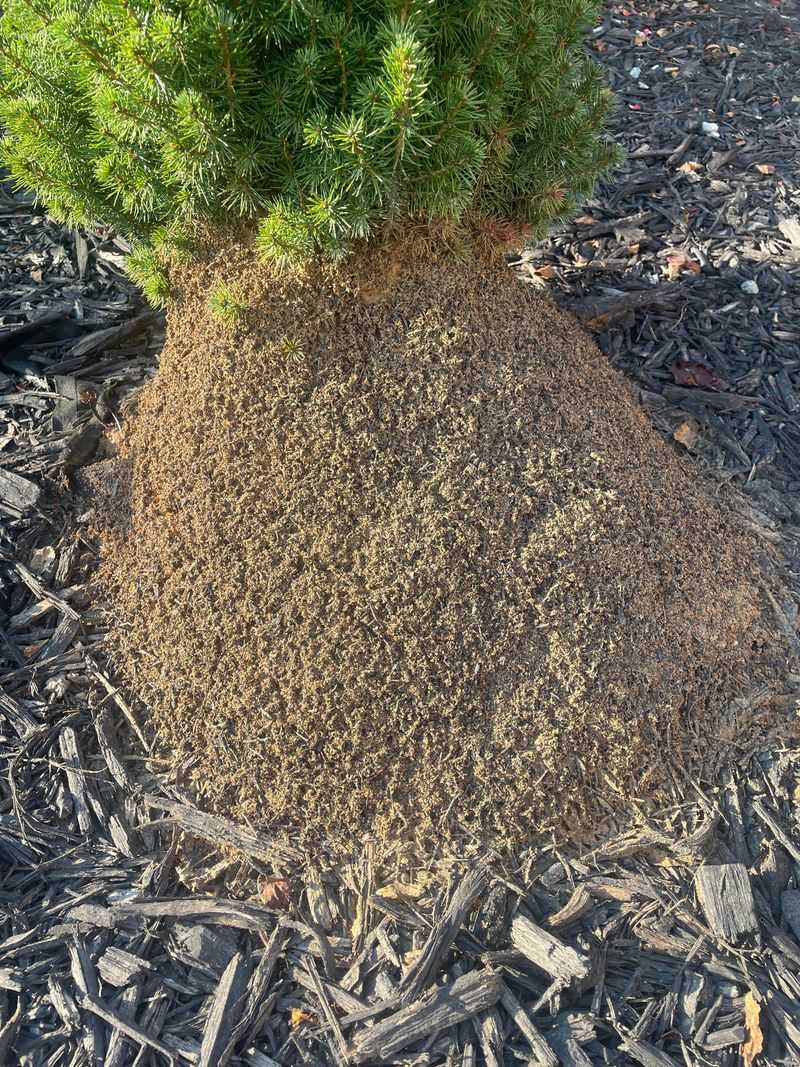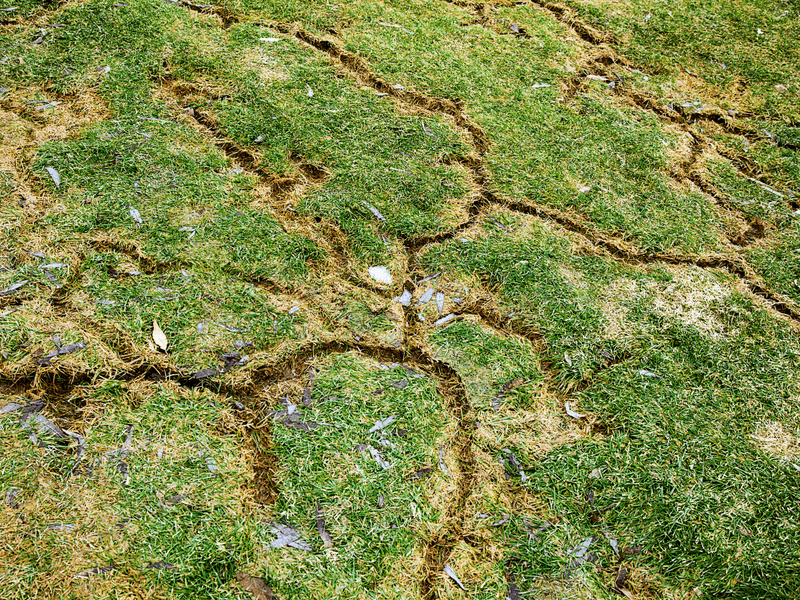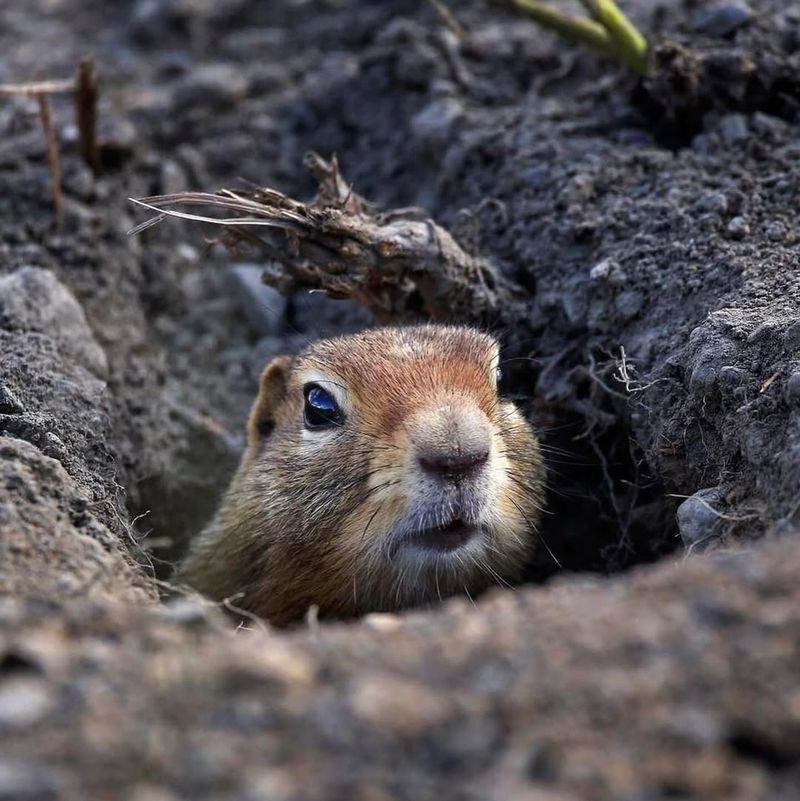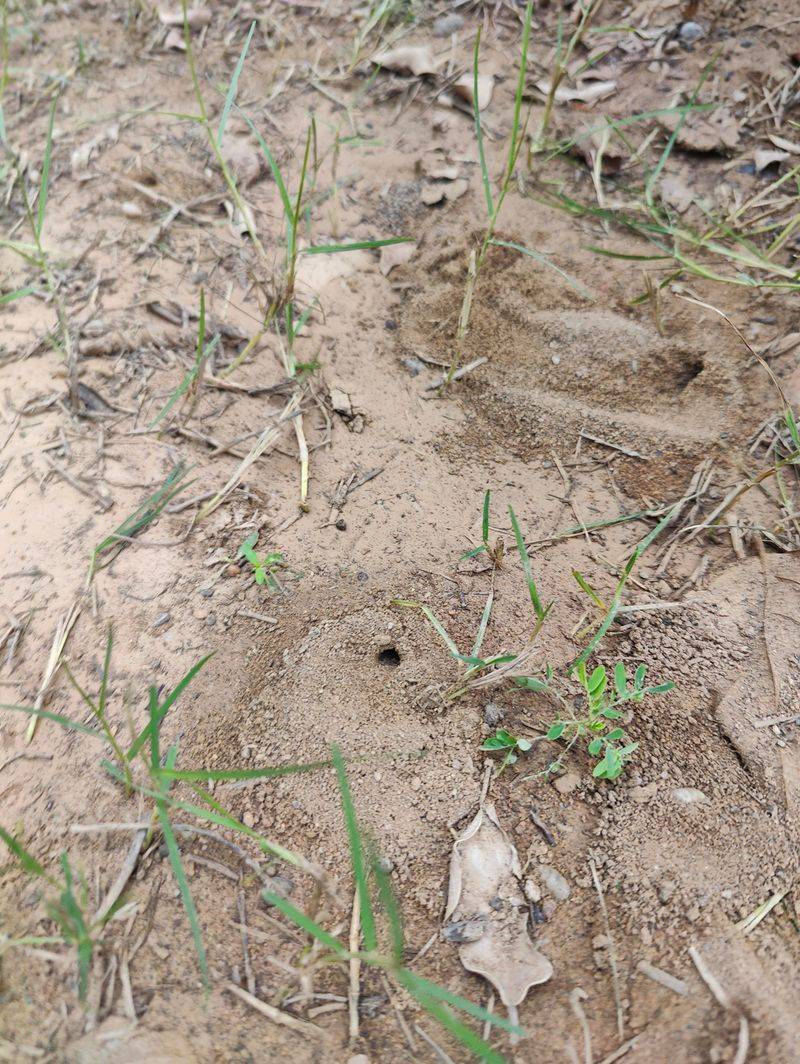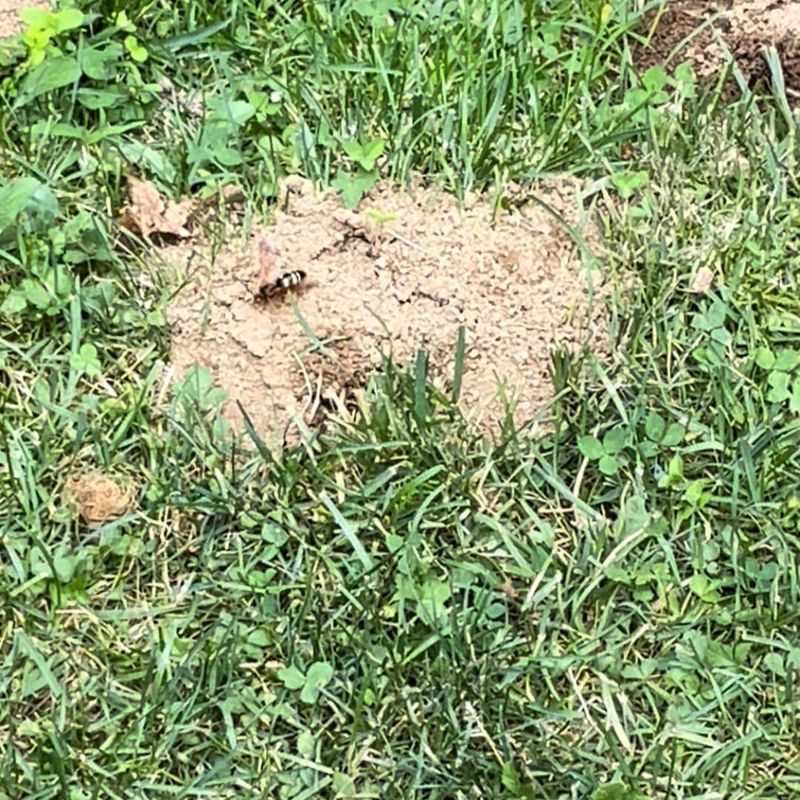You spot mysterious dirt piles popping up across your Kansas lawn and instantly blame moles. But not so fast—those little mounds might be the work of a different underground visitor. From voles to pocket gophers, several critters dig beneath the surface for food or shelter.
Each one leaves its own clues, and misidentifying them can lead to wasted effort. I’ve seen homeowners spend time and money on the wrong fix, only to have the problem return. Knowing your true backyard digger is the first step to solving it for good.
1. Pocket Gophers Leave Fan-Shaped Dirt Piles
Gophers create crescent or fan-shaped mounds that look different from the volcano-style hills moles make. Their tunnels run deeper underground, and they push soil to the surface at an angle.
Kansas yards with sandy or loose soil are especially attractive to these burrowing rodents. You’ll often find the entrance hole off to one side rather than in the center of the mound.
Look for fresh dirt that’s finely textured and piled neatly—it’s a giveaway sign of gopher activity in your lawn.
2. Earthworm Castings Appear As Small Bumps
When earthworms digest organic matter, they leave behind tiny piles of soil called castings on your lawn’s surface.
These look like small, squiggly mounds or miniature mud towers scattered randomly across the grass. Kansas lawns with healthy, moist soil tend to have more earthworm activity, especially after rain.
Unlike mole or gopher mounds, castings are much smaller—usually just an inch or two tall. These bumps are actually beneficial since earthworms aerate the soil and improve drainage naturally.
3. Ants Build Hills Above Their Underground Colonies
Ant colonies construct cone-shaped mounds with a central opening where workers carry soil particles to the surface. These hills can range from tiny bumps to several inches high, depending on the species.
Fire ants and harvester ants are common in Kansas, and their mounds often appear in sunny, open areas of your yard.
The dirt is usually fine and powdery, quite different from the chunky clumps gophers leave behind. Watch for ant traffic around the entrance—it’s a clear indicator of an active colony below.
4. Voles Create Shallow Runway Systems
Voles tunnel just below the grass surface, leaving behind visible trails and small piles of dirt mixed with clipped grass. Their runways look like narrow paths pressed into the lawn, often connecting multiple entry points.
These mouse-like rodents thrive in Kansas yards with thick ground cover or mulch where they can hide from predators.
Unlike moles, voles feed on plant roots, bulbs, and seeds rather than insects. Check for chewed vegetation near the mounds—it’s a telltale sign of vole damage rather than mole activity.
5. Crawfish Chimneys Show Up Near Wet Areas
Did you know crawfish live on land too? They dig burrows in moist soil and build distinctive mud chimneys or towers at the entrance.
These structures can reach several inches tall and look like miniature clay castles. Kansas properties near streams, ponds, or areas with poor drainage often attract burrowing crawfish.
The chimneys are made of mud pellets stacked carefully, creating a unique appearance you won’t confuse with other mounds. If you see these near water sources, you’ve found your mystery mound maker.
6. Ground Squirrels Excavate Large Entry Holes
Thirteen-lined ground squirrels are common across Kansas and create noticeable dirt mounds around their burrow entrances.
These holes are larger than gopher openings—often two to three inches wide—and surrounded by scattered soil. You’ll typically spot these mounds in open, sunny spots where the squirrels can watch for danger.
They’re active during the day, so you might actually catch them darting in and out of their tunnels. The dirt around their holes tends to be loose and spread out rather than neatly piled.
7. Digger Wasps Make Small Crater-Like Holes
Solitary digger wasps excavate tiny burrows in bare or sparse lawn areas, leaving small crater-shaped mounds with a visible entrance hole. Each wasp digs its own nest to lay eggs and store paralyzed insects for larvae.
Kansas yards with compacted or sandy soil often attract these beneficial insects during warm months. The mounds are much smaller than those made by mammals—usually less than an inch across.
Despite their intimidating name, digger wasps rarely sting people and actually help control pest populations naturally in your garden.
8. Cicada Killer Wasps Dig Impressive Burrows
These large wasps create substantial mounds—sometimes several inches wide—near their burrow entrances, usually in well-drained, sandy soil. Each female digs a complex tunnel system where she provisions her young with paralyzed cicadas.
Kansas summers bring out these impressive insects, and their mounds often appear in flower beds, along sidewalks, or in sparse lawn areas.
The dirt piles are surprisingly large for an insect, with a clearly visible entrance hole. Though they look scary, cicada killers focus on hunting cicadas and pose little threat to humans.

